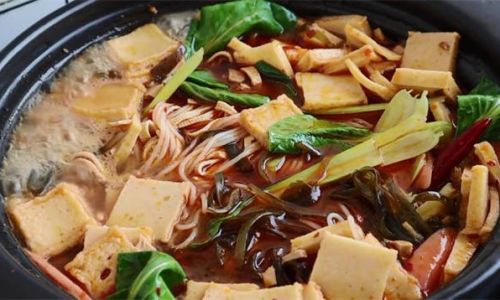Introduction
In the vast culinary landscape of Asia, there exists a dish that transcends borders and captures the hearts and taste buds of food enthusiasts worldwide – mifen, commonly known as rice noodles. Originating from China’s Yunnan province, mifen has evolved into a beloved street food staple across various regions, each with its unique twist on preparing this delicate and versatile ingredient. Whether served hot in a soup broth, stir-fried with an array of vegetables and meats, or enjoyed cold with a zesty dressing, mifen offers a blank canvas for culinary creativity. This article aims to guide you through the intricacies of making delicious mifen at home, ensuring every bite is a delightful experience.
Understanding the Basics: Types of Rice Noodles

Before diving into the recipes, it’s crucial to understand the different types of rice noodles available, as they each have distinct textures and cooking requirements.
- Fresh Rice Noodles: These are soft, slightly sticky, and often sold in wet, refrigerated sections of Asian markets. They cook quickly and are perfect for soups or stir-fries.
- Dried Rice Noodles: These come in various thicknesses and are more shelf-stable. They require soaking in water before cooking to soften them.
- Rice Vermicelli (Cellophane Noodles): Thinner and translucent, these noodles are made from rice starch and are often used in cold salads or light soups.
Choosing the right type of rice noodle for your dish will significantly impact its final texture and flavor.
Preparing the Ingredients: A Balanced Flavor Palette
The beauty of mifen lies in its simplicity and adaptability. Here are some essential ingredients and tips for creating a balanced and flavorful dish:
- Broth: A rich, flavorful broth is the backbone of soup-based mifen. Chicken, beef, or vegetable broth can be used, infused with aromatics like ginger, garlic, and star anise for depth.
- Sauces and Condiments: Soy sauce, fish sauce, and sesame oil provide umami, while chili oil or flakes add a spicy kick. Hoisin sauce or sweet chili sauce can balance out the heat with sweetness.
- Proteins: Sliced pork, chicken, beef, shrimp, or tofu add substance and protein. Marinating meats can enhance their flavor.
- Vegetables: Fresh vegetables like spinach, mushrooms, bamboo shoots, carrots, and bell peppers add color, texture, and nutrients.
- Garnishes: Fresh herbs such as cilantro, mint, and basil, along with chopped scallions and peanuts, elevate the dish with freshness and crunch.
Step-by-Step Guide to Making Delicious Mifen
Soup-Based Mifen
-
Prepare the Broth: Start by simmering your chosen broth with aromatics. For a chicken broth, bring water to a boil with a whole chicken, ginger slices, garlic cloves, and star anise. Reduce to a simmer and cook for at least an hour, skimming any impurities that rise to the surface. Strain the broth and discard the solids.
-
Cook the Noodles: If using fresh rice noodles, blanch them in boiling water for a minute or two until tender but not mushy. For dried noodles, soak them in warm water until pliable, then cook according to package instructions. Drain and rinse with cold water to prevent sticking.
-
Prepare the Toppings: Slice your chosen protein thinly and cook until tender. Blanch vegetables separately to retain their color and crispness.
-
Assemble the Dish: Ladle hot broth into bowls, add cooked noodles, and arrange toppings on top. Drizzle with sauces and condiments to taste, and garnish with fresh herbs and peanuts.
Stir-Fried Mifen
-
Marinate the Protein: Slice your meat or tofu and marinate it in a mixture of soy sauce, rice vinegar, sesame oil, and a pinch of sugar for at least 30 minutes.
-
Prepare the Noodles: Follow the same cooking method as for soup-based mifen, but instead of draining and rinsing, set the noodles aside.

-
Stir-Fry the Ingredients: Heat a wok or large skillet over high heat with a bit of oil. Stir-fry the marinated protein until browned and cooked through. Remove from the pan and set aside. In the same pan, add vegetables and stir-fry until tender-crisp.
-
Combine and Season: Return the protein to the pan, add the cooked noodles, and toss gently to combine. Pour in a mixture of soy sauce, fish sauce, and a splash of water to moisten the noodles. Cook until everything is heated through and well mixed.
-
Serve: Plate the stir-fried mifen, drizzle with chili oil or flakes if desired, and garnish with fresh herbs and chopped scallions.
Cold Mifen Salad
-
Cook and Cool the Noodles: Cook rice vermicelli according to package instructions, then rinse under cold water and drain well. Let them cool completely.
-
Prepare the Dressing: In a small bowl, whisk together soy sauce, rice vinegar, sesame oil, sugar, and a pinch of salt. Adjust sweetness and tanginess to taste.
-
Prepare Toppings: Julienne vegetables like cucumbers, bell peppers, and carrots. Boil or steam edamame or other beans until tender.
-
Assemble the Salad: In a large bowl, combine the cooled noodles, vegetables, and any protein you like (grilled chicken, shrimp, or tofu). Pour the dressing over the mixture and toss gently to coat everything evenly.
-
Serve: Garnish with chopped herbs, peanuts, and a drizzle of chili oil. Serve chilled or at room temperature.
Conclusion
Making delicious mifen at home is not just about following recipes; it’s about understanding the balance of flavors, textures, and cooking techniques that elevate this humble dish to culinary excellence. Whether you prefer a hearty soup, a fiery stir-fry, or a refreshing salad, the versatility of mifen allows you to explore endless possibilities. Experiment with different ingredients, sauces, and garnishes to create your signature mifen dish. Remember, the key to success lies in attention to detail, patience in simmering broths, and a willingness to embrace the unique flavors of Asian cuisine. With practice, you’ll soon be crafting bowls of mifen that rival the best street food stalls, delighting your family and friends with every bite. Happy cooking!






0 comments